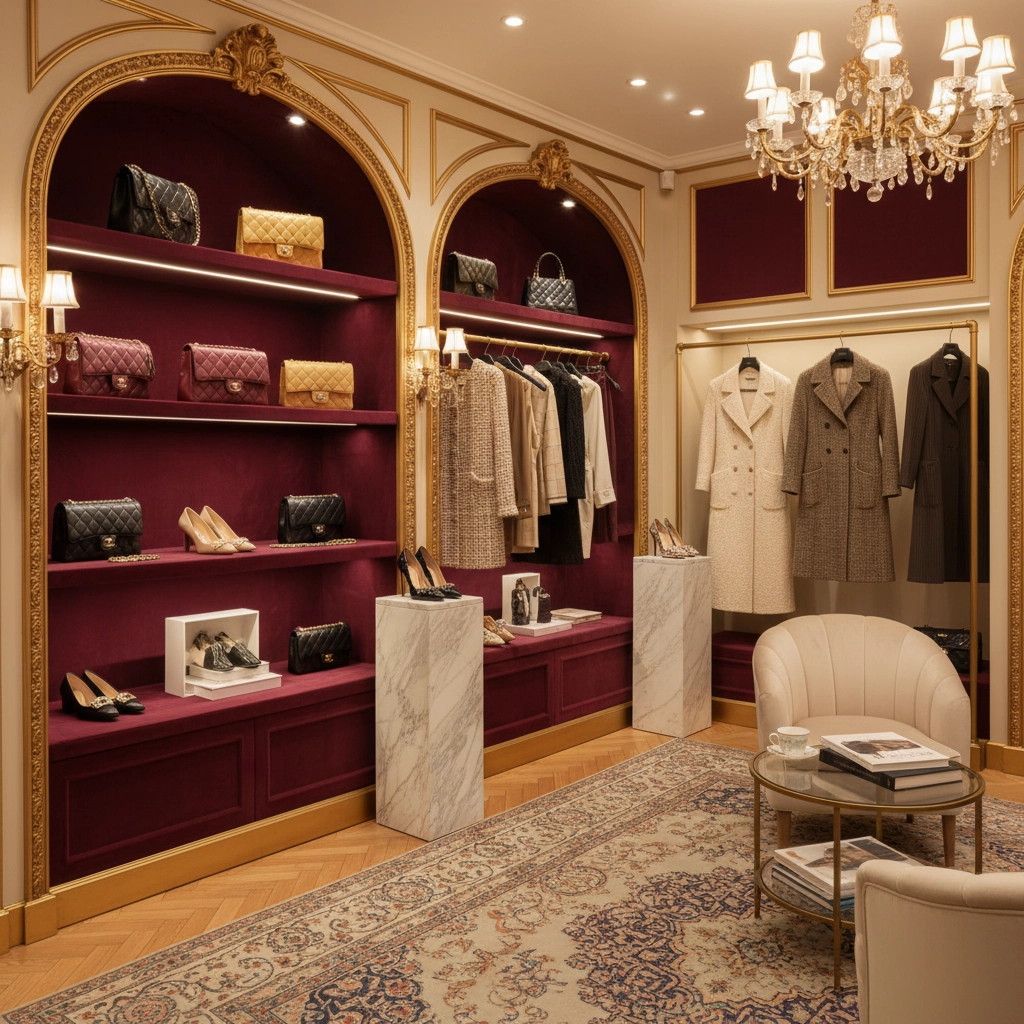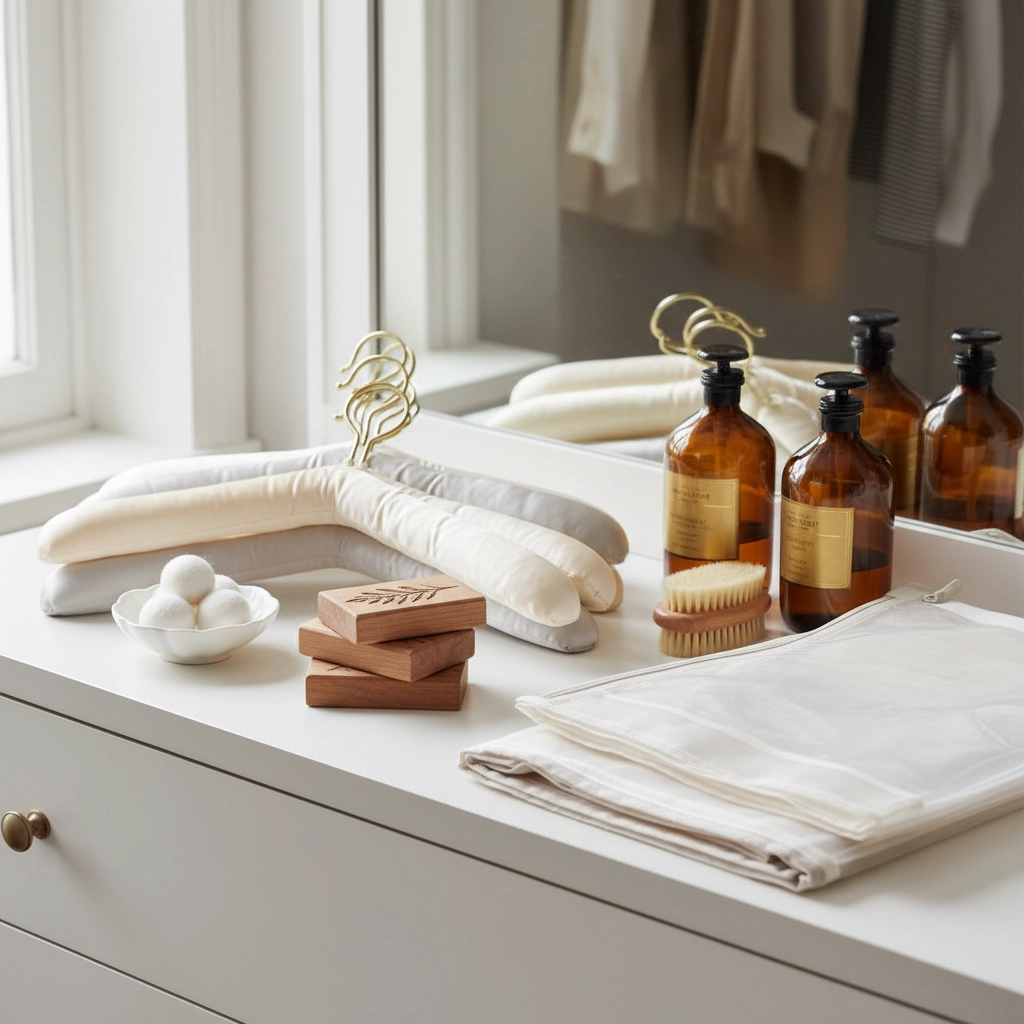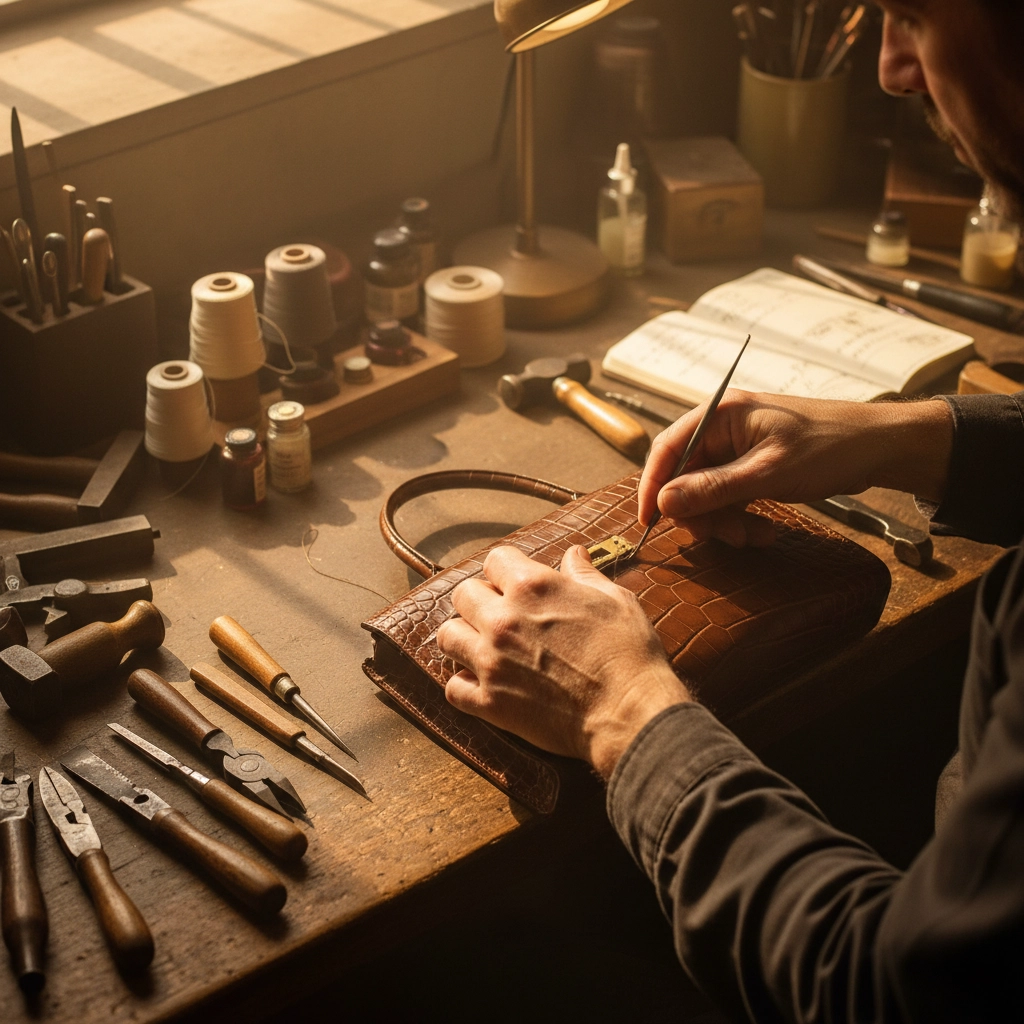Sustainability Matters: 7 Mistakes You're Making with Your Luxury Wardrobe (and How to Fix Them)
The luxury fashion world is having a moment of truth. While we've all been swept up in the beauty of exquisite craftsmanship and timeless designs, there's an uncomfortable reality we need to face: the fashion industry accounts for a staggering 10% of global CO2 emissions. But here's the thing: sustainability and luxury don't have to be at odds with each other.
As someone who's spent years in fashion retail, I've seen firsthand how the most well-intentioned luxury lovers can unknowingly undermine their environmental values. The good news? Small changes in how we approach our wardrobes can make a massive difference. Let's dive into the seven biggest mistakes you're probably making with your luxury collection: and more importantly, how to fix them.
Mistake #1: Choosing Quantity Over Quality
This might sound counterintuitive when we're talking about luxury fashion, but hear me out. Even luxury shoppers can fall into the trap of accumulating pieces without considering their longevity. I've seen clients with closets full of "investment pieces" that barely get worn because they were purchased impulsively rather than strategically.
The Fix: Embrace the art of curation. Every luxury piece should earn its place in your wardrobe through three criteria: exceptional craftsmanship, versatility, and timeless appeal. Instead of buying five trendy designer pieces, invest in one show-stopping item that you'll reach for season after season. Think of it as building a wardrobe that evolves with you rather than against you.

Mistake #2: Ignoring the Preloved Market
There's still a stigma around pre-owned luxury goods, and it's costing both your wallet and the planet. With 78% of consumers now preferring to buy secondhand to reduce fashion waste, the preloved luxury market has transformed from a niche corner of fashion into a sophisticated, mainstream shopping experience.
The Fix: Embrace the thrill of the hunt. Shopping pre-owned designer fashion is one of the most sustainable moves you can make while accessing unique pieces with incredible histories. That vintage Chanel bag or perfectly tailored Hermès blazer? They're not just fashion statements: they're conversation starters with stories to tell. Platforms like The RealReal and Vestiaire Collective have made authenticated luxury resale more accessible and trustworthy than ever.
Mistake #3: Improper Storage and Care
This one breaks my heart because it's so easily preventable. I've seen thousand-dollar cashmere sweaters ruined by wire hangers and designer shoes destroyed by humid storage conditions. When you don't properly care for your luxury pieces, you're essentially throwing money away while creating unnecessary waste.
The Fix: Treat your wardrobe like the investment portfolio it is. Use padded hangers for delicate fabrics, invest in breathable garment bags, and store pieces in cool, dry environments. Skip the frequent dry cleaning: many luxury items can be refreshed with eco-friendly fabric sprays and proper airing. A well-maintained wardrobe doesn't just last longer; it retains its value and can even become more valuable over time.

Mistake #4: Replacing Instead of Repairing
The throwaway mentality has infected even luxury fashion consumption. When a designer piece gets damaged, the immediate impulse is often to replace it. But this approach completely ignores the incredible craftsmanship that went into creating these items in the first place.
The Fix: Develop relationships with skilled artisans who specialize in luxury repair and restoration. That scuffed pair of Louboutins? A good cobbler can make them look brand new. The vintage Saint Laurent jacket with a loose button? A skilled tailor can restore it to perfection. Repairing and restoring your pieces honors the artistry behind them while keeping them out of landfills.
Mistake #5: Over-Washing Your Wardrobe
Here's a secret that might surprise you: you're probably washing your clothes way too much. Excessive laundering doesn't just damage fabrics and shorten garment lifespans: it contributes significantly to environmental pollution through water usage and the release of microplastics from synthetic materials.
The Fix: Embrace the "less is more" philosophy. Denim experts recommend washing jeans only every six months, and the same principle applies to many luxury pieces. Synthetic fabrics like polyester release microplastic particles into waterways every time they're washed. Instead, focus on spot-cleaning, proper airing, and rotating pieces to reduce wear. Your clothes (and the planet) will thank you.

Mistake #6: Supporting Problematic Brands
Even conscious luxury shoppers sometimes supplement their wardrobes with fast fashion purchases, inadvertently supporting brands with questionable environmental and labor practices. While some major retailers have improved their sustainability efforts, others continue to prioritize profit over planet.
The Fix: Do your homework before you shop. Research brands' environmental, social, and governance practices. Avoid companies known for poor labor conditions or environmental damage: brands like Missguided, Boohoo, and Forever 21 should be completely off your radar. When building a sustainable luxury wardrobe, every purchase should align with your values, whether from established luxury houses or emerging sustainable designers.
Mistake #7: Ignoring the Industry's Wasteful Practices
Perhaps the most significant mistake is turning a blind eye to wasteful industry practices and not using your purchasing power to demand better. The luxury fashion industry isn't immune to sustainability issues: Burberry made headlines for burning over $37 million worth of merchandise to prevent it from reaching certain consumers, a practice that has actually increased threefold since 2014.
The Fix: Hold brands accountable with your wallet. Support luxury brands that demonstrate genuine commitment to environmental responsibility. Companies like Gucci and Burberry (despite past missteps) are proving that luxury and sustainability can coexist beautifully. Ask questions about production methods, material sourcing, and waste management. Your purchasing decisions shape the future of luxury fashion.

The Bigger Picture: Redefining Luxury
True luxury isn't about having the most: it's about having the best. When you curate a wardrobe filled with pieces that are ethically made, properly cared for, and genuinely cherished, you're not just making a fashion statement. You're making a statement about your values and your vision for the future.
The relationship between luxury and sustainability might seem complex, but it doesn't have to be contradictory. By avoiding these seven common mistakes, you're not just reducing your environmental impact: you're elevating your entire approach to fashion. You're choosing quality over quantity, stories over status symbols, and longevity over fleeting trends.
Your wardrobe should be a reflection of your best self: thoughtful, sophisticated, and conscious of the world around you. When every piece in your closet has been chosen with intention, cared for with dedication, and valued for its true worth, that's when fashion becomes not just luxury, but legacy.
The next time you're tempted to make an impulse purchase or throw away a damaged piece, remember: the most sustainable luxury wardrobe is the one you already own, treated with the respect and care it deserves. Make these changes today, and watch as your relationship with fashion transforms from consumption to curation, from ownership to stewardship.
After all, true elegance never goes out of style; and neither does taking care of our planet.

